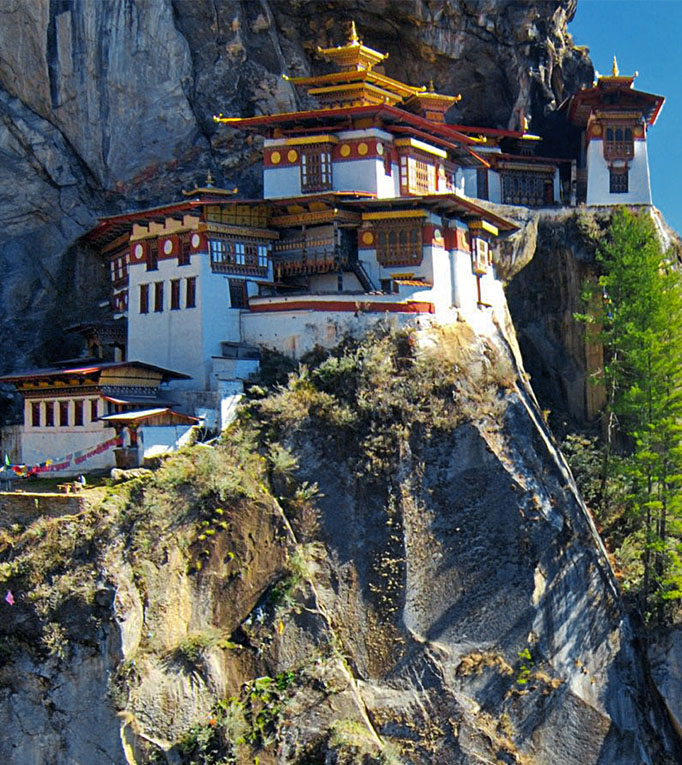

Takstang (Tiger’s Lair) monastery, Bhutan’s most famous sight. Your guide can arrange pony/horse for ride uphill till the Cafeteria, but one must be able to walk after that. A proper trekking boot or good walking shoes is necessary for this hike those who choose not to hike can stay back with the driver and tour around Paro. Taktshang - Tiger's Nest: Taktshang or 'Tiger's Nest' as it is often referred to for Taktshang Pelphung monastery, is one of the most venerated and famous of Bhutan's monasteries. It is located on the face of a 900m sheer cliff. An impressive and un-miss able site, but accessible only by walk or to ride mules/pony. Taktshang was rebuilt by population of Tsento village. Again in April of 1998, a major fire destroyed the main structure of the building and its contents (some believe it to be arson). Reconstruction began in 2000 and was completed and consecrated after extensive efforts and financial support of Governments as well as donors. Ta Dzong, once a watchtower, built to defend Rinpung Dzong during inter-valley wars of the 17th century, Ta Dzong was inaugurated as Bhutan’s National Museum in 1968. Rinpung Dzong. Built in 1646 by Shabdrung Ngawang Namgyal, the first spiritual and temporal ruler of Bhutan, the Dzong houses the monastic body of Paro, the office of the Dzongda (district administrative head) and Thrimpon (judge) of Paro district Drukgyel Dzong. It was from here that the Bhutanese repelled several invading Tibetan armies during the 17th century. Nearby visit traditional Bhutanese Farm House which offers good insight into lifestyle of local people. Kyichu Lhakhang, one of the oldest and most sacred shrines of the Kingdom. National Museum of Bhutan is a cultural museum in the town of Paro in western Bhutan. Established in 1968, in the renovated ancient Ta-dzong building, above Rinpung Dzong under the command of His Majesty, the King Jigme Dorji Wangchuck, the third hereditary Monarch of Bhutan. The necessary infrastructure was created to house some of the finest specimens of Bhutanese art, including masterpieces of bronze statues and paintings. Suitable galleries were constructed to house the extensive collections. Works of art were elegantly displayed on scientific lines.